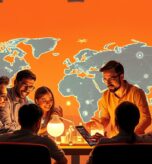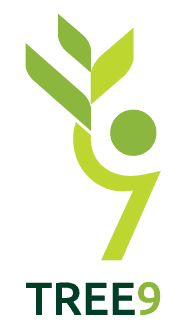Artificial Intelligence (AI) is rapidly evolving and transforming industries, and the creative industry is no exception. From graphic design to content writing, AI is revolutionizing how professionals work, raising the question: “How AI impacts the creative industry?”
Benefits of AI in the creative industry
Improved Productivity
Creatives must continuously generate fresh, unique, and personalized ideas and content. They are responsible for developing new concepts, planning, writing content, designing, and editing. The emergence of AI has provided a broader perspective on job requirements and the industries they work in, helping them come up with new ideas more easily and quickly. As a result, AI helps the creative industry optimize workflow.
Time optimization
Continuing to answer the question “How AI impacts the creative industry”, AI helps creators accelerate processes such as brainstorming, drafting, editing, and automating repetitive tasks. It can design based on templates, suggest modern assets, and enable creatives to produce high-quality work by allowing them to allocate more time to other important tasks.
Advanced Personalization
AI helps creatives filter data, and analyze consumer preferences and behaviors, allowing professionals in the creative industry to develop content and strategies based on data, thereby adapting to specific audiences. From personalized marketing campaigns to AI-generated music and movie recommendations, this technology has proven to help brands deliver engaging experiences to their customers.
Boost Creativity
Instead of replacing human creativity, AI is a powerful tool for inspiration and innovation in style, thinking, and ideation. This emerging technology helps creatives explore new styles, experiment with unique ideas, and push the boundaries of creativity. This further clarifies the question of “How AI impacts the creative industry.”

Types of AI Used in the Creative Industry
AI has become an integral part of the creative industry, boosting efficiency, automating repetitive tasks, and even generating original content. Here are some key areas where AI supports creative work:
- Generative AI (e.g., ChatGPT, Midjourney): Creates text, images, and videos based on prompts.
- Predictive AI (e.g., Adobe Sensei): Analyzes trends and recommends creative directions.
- Automated Design AI (e.g., Canva, Runway ML): Assists in layout design and media editing.
- Personalization AI (e.g., Google AI Ads, Netflix’s recommendation system): Enhances user experience by tailoring content to individual preferences.
Understanding these AI types helps creatives integrate the right tools into their workflows effectively.
AI Suitability for Different Creative Roles
AI has become an integral part of the creative industry, boosting efficiency, automating repetitive tasks, and even generating original content. Here are some key areas where AI supports creative work:
Graphic Design
AI-powered tools like Midjourney, DALL·E, and Canvas AI features allow designers to generate stunning visuals in seconds. These tools automate complex design processes, making it easier for businesses and individuals to create high-quality content.
Content Writing & Copywriting
AI writing assistants like ChatGPT, Jasper AI, and Copy.ai help marketers and content creators generate blogs, social media captions, and ad copy. While AI-generated content requires human refinement, it significantly speeds up the writing process.
Video Production & Editing
AI-powered tools such as Runway ML and Synthesia automate video editing, apply effects, and even create AI-generated presenters for explainer videos. This technology reduces production time and costs, making video content creation more accessible.
Marketing & Advertising
AI enhances digital marketing by optimizing ad placements, analyzing consumer behavior, and personalizing content. Platforms like Adobe Sensei and Google’s AI-powered ad tools help businesses create data-driven marketing campaigns that improve engagement and ROI.
The future of AI in the creative industry
Unlike humans, AI doesn’t learn naturally, but new methods like reinforcement learning (RL) and deep reinforcement learning (DRL) allow AI to improve by learning from experience. These technologies have already enabled AI to surpass human performance in areas like gaming and strategy-based tasks.
AI is not here to replace creativity but to enhance it. As AI continues to evolve, its role in the creative industry will become more refined. It will become a powerful tool to optimize workflows, inspire new ideas, and push creative boundaries. However, achieving true AI-driven creativity will still require further research to better understand human thinking and the creative process.
To thrive in this AI-driven era, creatives should:
- Develop AI literacy – Learn how AI tools work and how to integrate them into creative workflows.
- Enhance critical thinking – AI provides data, but humans must interpret and apply it effectively.
- Focus on uniqueness and human connection – Use AI as a tool, not as a crutch, to maintain originality and authenticity.


Conclusion
In conclusion, AI is revolutionizing the creative industry by improving productivity, time optimization, advanced personalization, and boosting creativity. This has clarified how AI impacts the creative industry, helping businesses shape AI more clearly, thereby utilizing AI optimally and effectively in the future.






